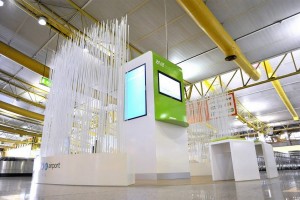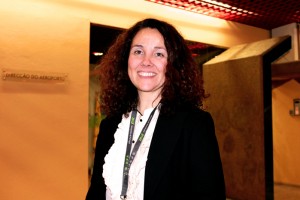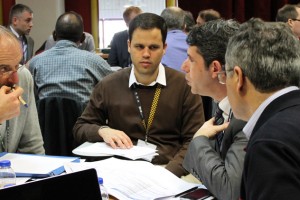
The Energy IN TIME Operating Principle
Energy IN TIME is a European project funded by the 7th Framework program, with the goal of developing a Smart Energy Simulation Based Control method to reduce the energy consumption and cost in the operational stage of buildings. Energy IN TIME will go beyond existing building control techniques, by integrating a control and operational approach, combining state-of-the-art modelling techniques with an innovative simulation-based control technique. This will allow for the automatic generation of optimal operational plans tailored to actual building and user requirements, reducing system inefficiencies and contributing to the improved building energy efficiency and comfort.
There are different abstraction levels, or layouts in Building Energy Control. The Energy IN TIME solution will act on different control levels.
Energy IN TIME defines an Execution Level, on which the daily operation of the building is controlled via the BEMS, providing set-points for all equipment and systems. A sensors network will detect faults in actuators, systems or even in sensors, ensuring that the building keeps working properly, as it was designed to.
On an upper level Energy IN TIME will define the Supervision & Reconfiguration Level in which, supported by monitoring and fault Detection & Diagnosis, the Simulation Based Control will be managed. At this level, using simulation techniques, the actual monitored energy demand will be compared to the simulated demand to keep track of the existing gap between the two. Whenever the gap is higher than desired Energy IN TIME will look for the cause, solve it and, if necessary, reconfigure the building energy system, setting new set- points adapted to the new situation.
Additionally, Energy IN TIME will distinguish a third level: the Operational Plan Generation Level. At this level the Optimal Operational Plan for the particular building configuration will be generated according to external variables such as weather, user behavior and energy prices. By using forecasted data this Plan will be generated in advance, anticipating future needs, and will be launched to the building IN TIME and operated by the energy system installed. For the Optimal Operational Plan definition Energy IN TIME will apply State-of-the-Art simulation techniques and optimization algorithms that will ensure the minimum energy consumption while maintaining the comfort conditions specified by the users.
To make the solution even more robust, Energy IN TIME will be complemented with two additional tools:
Decision Support Tool, at the Decision Making level, gathering all the data related to the building operation and status. With this information, Energy IN TIME will offer an additional tool which will be extremely useful for refurbishment and retrofitting works, as well as for new buildings design.
Trying to cover the maintenance operations, Energy IN TIME will develop a Continuous Commissioning methodology focused on keeping the equipment in its most efficient state, reinforced by a Predictive Maintenance module in the Global Energy IN TIME solution.













